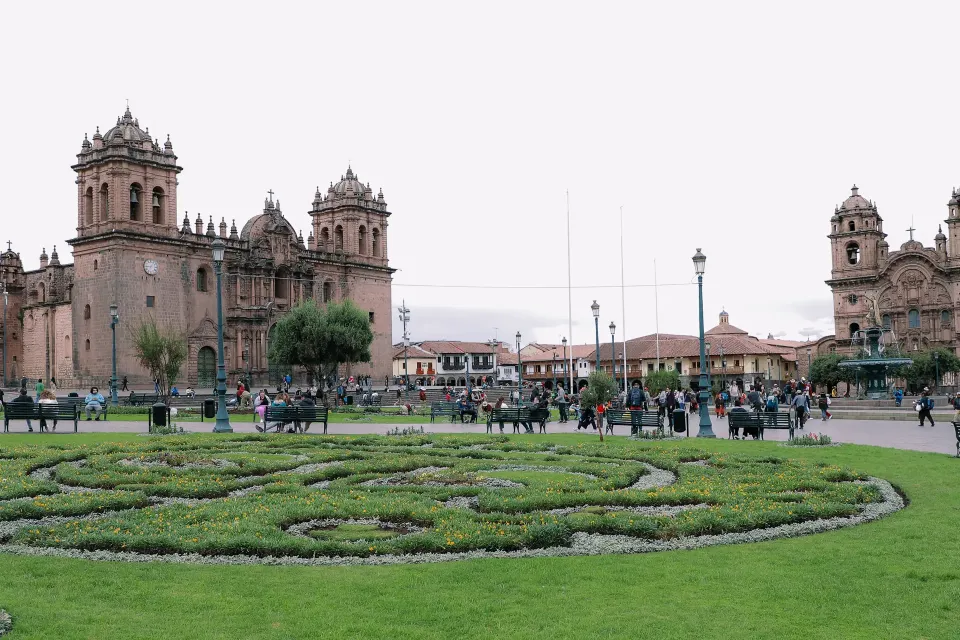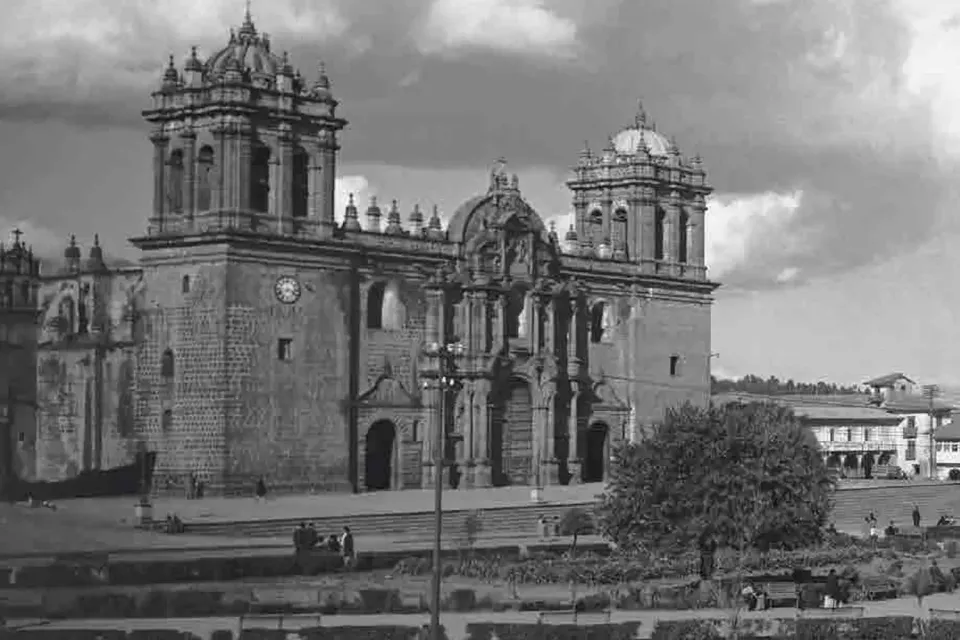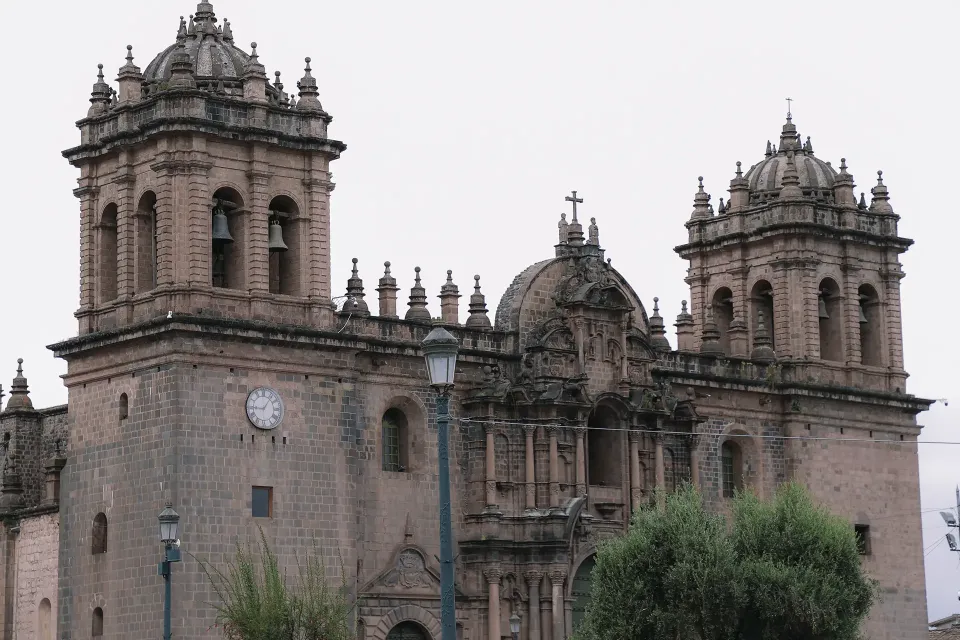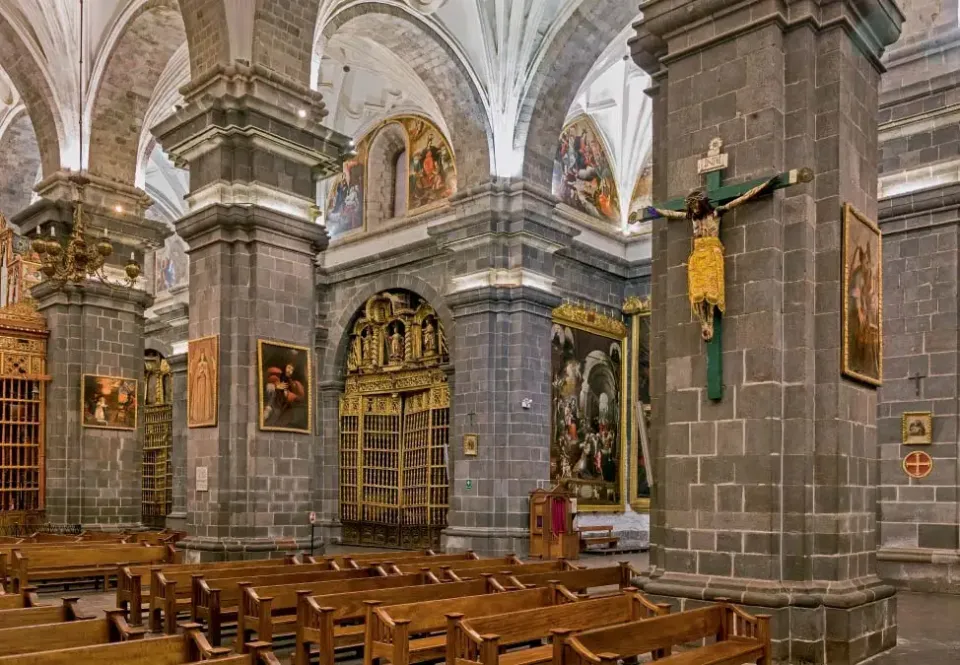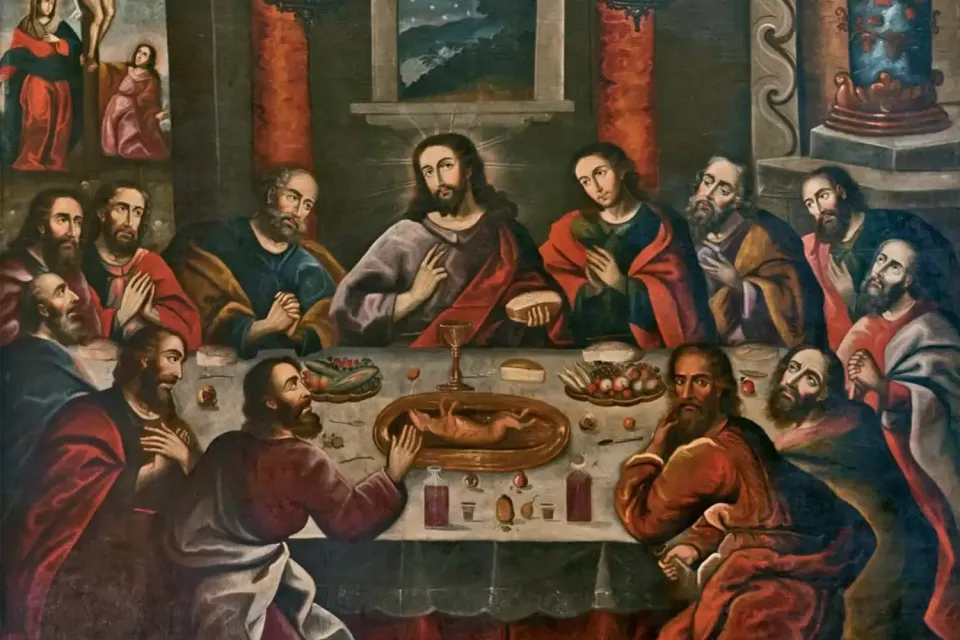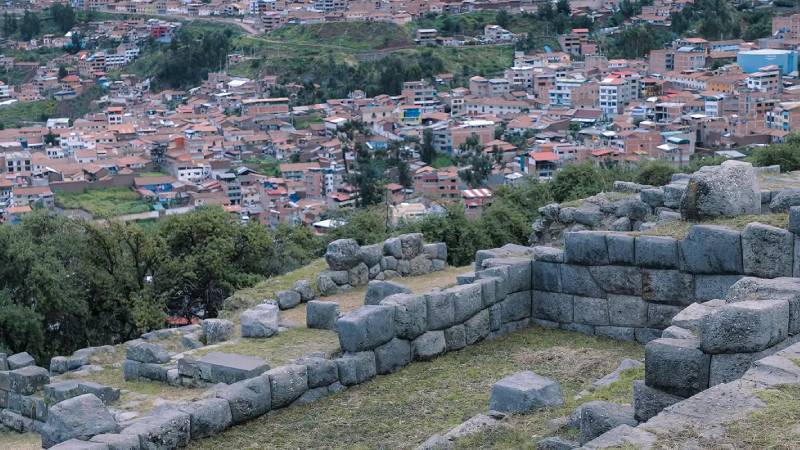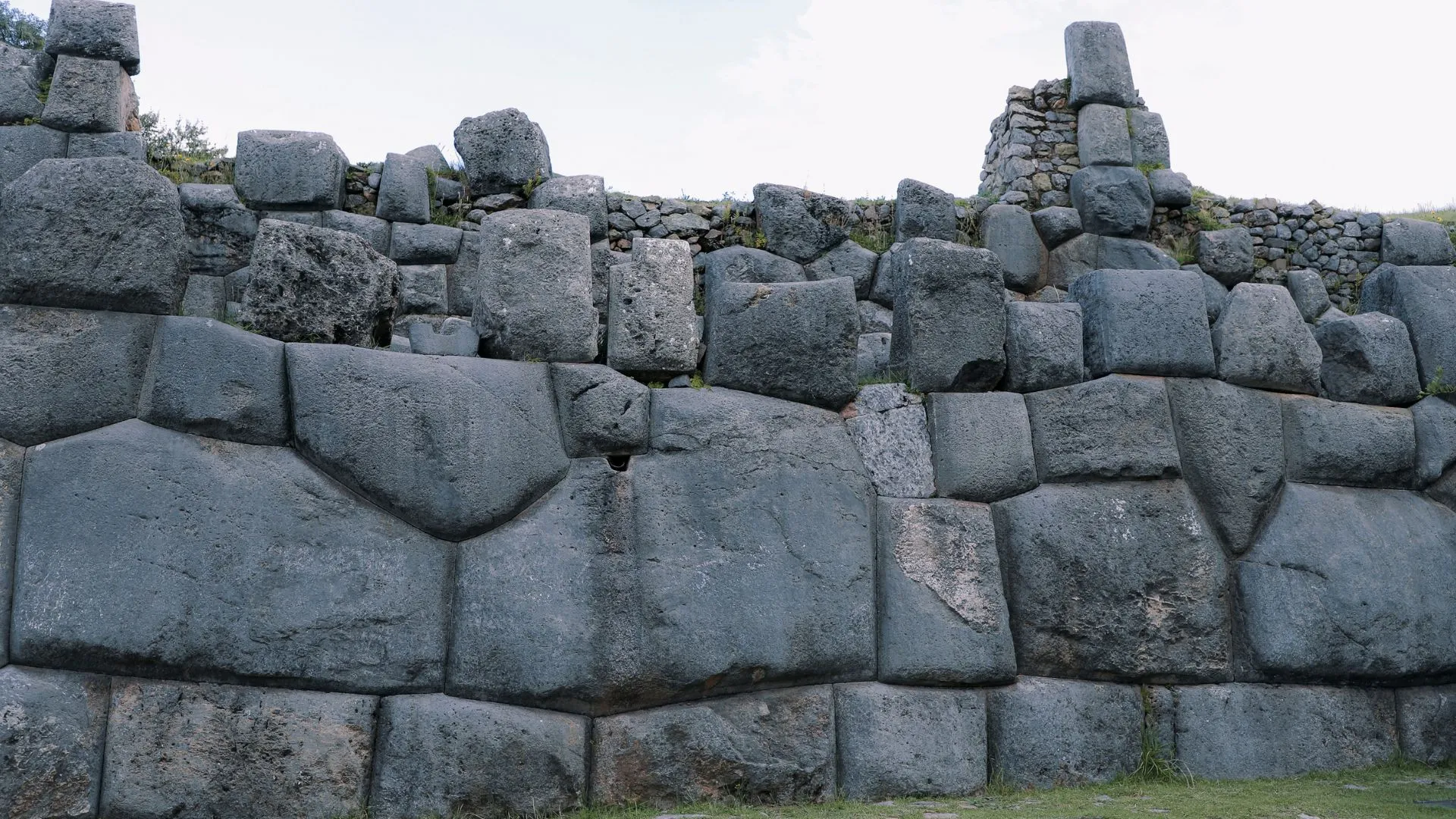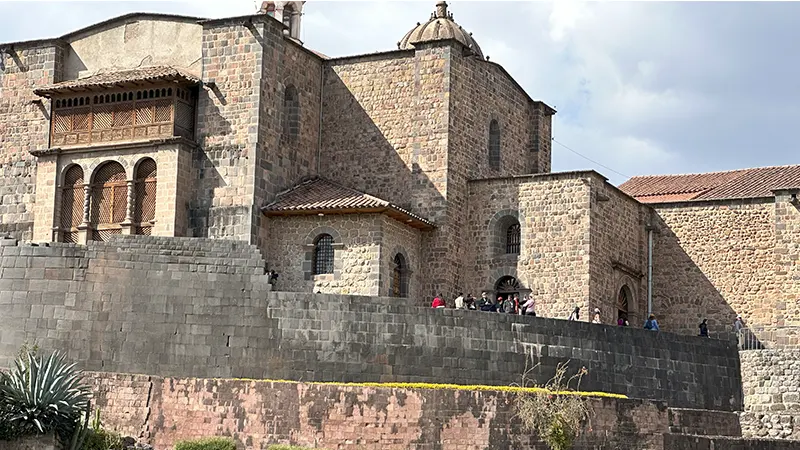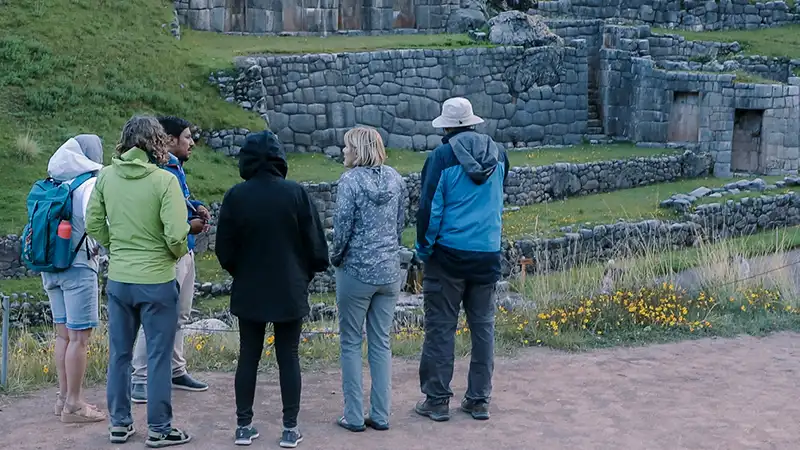Did you know that the Cusco Cathedral is built using stones carved by the Inca culture?
It is the main temple you will find in the beautiful city of Cusco, Peru. It is also known as the "Basilica Cathedral of the Virgin of the Assumption." Additionally, next to it, you will notice the Temple of Triumph, and together they make up the cathedral complex. Once you arrive at the main square, you will be able to appreciate it.
The Cusco Cathedral covers an area of 3,920 square meters. It gained greater importance when the historic center of Cusco was declared a UNESCO World Heritage Site in 1983.
If you visit Cusco, you must see the cathedral because you will find colonial art, architecture, and legends about its construction. Here, I will show you how you can enter without any issues.
Location
The Cusco Cathedral is located in the department of Cusco, province of Cusco, and district of Cusco. It is right in the center of the historic district of Cusco (north of the main square).
History of the Cusco Cathedral
Before the Inca culture, the city of Cusco was a lagoon called Morkill that dried up over the years. Then, cultures such as Marcavalle and Chanapata emerged, giving rise to a large population.
During the era of the Incas, Inca Pachacutec rebuilt and organized the city. He sought perfection in the buildings surrounding the square. It was surrounded by palaces like Kiswarkancha, which was built with stone walls and thatched roofs. It housed the royal family. Inca Viracocha lived in this palace before the arrival of the conquerors.
Another palace, like Suntur Wasi, an Inca armory and heraldry center, was located near Kiswarkancha. The first cathedral was built on these grounds.
When the Spaniards arrived in 1534, they began building the city over the Inca dwellings. Thus began the urban transformation. In October of the same year, Marquis Francisco Pizarro distributed lands. Over the years, Captain Sebastián Garcilaso de la Vega authorized the construction of mansions inside the Inca square and its surroundings. They also built temples and chapels over Inca palaces.
On March 11, 1560, Hernando Arias placed the foundation stone of the current Basilica Cathedral. This initiated the construction of the cathedral's base. Masters of works such as El Vizcaíno Juan Miguel de Veramendi, Juan Correa, Francisco Becerra, Bartolomé Carrión, Juan de Pontones, Bartolomé Montero de Espinosa, and Francisco de Cueva, among others, participated in the construction.
After nearly 100 years, in July 1654, the construction of the cathedral was completed.
On August 19, 1668, Bishop D. Bernardo de Izaguirre consecrated the Cusco cathedral in a solemn ceremony. The Church of Triumph was also built in 1732 and the Church of the Sacred Family in 1735.
Architectural Features
- Currently, the Cusco cathedral consists of three naves delimited by 14 cruciform pillars of Tuscan order, 24 ribbed vaults, 21 stone arches, and 32 semicircular arches, including an underground canal system.
- The material used for the cathedral's construction is andesite, making it a significant repository of art and culture from the Cusco school.
- It has a Gothic-Renaissance style that reflects that of Spain during the conquest.
- You will find the carved head of a jaguar on the cathedral doors because these are some of the religious symbols incorporated from the Incas.
- The facade of the Cusco cathedral features a Renaissance style.
- It has two auxiliary chapels: The Church of Triumph on the right and the Sacred Family on the left.
- The main altar was made entirely of silver, and the Sacristy contains forty canvases of the Bishops and Archbishops of Cusco.
What You Will Find Inside the Cathedral
- Main altar of the cathedral: The work is made of embossed silver and is Neoclassical style. Martín Torres, a master cabinetmaker from Cusco, completed this significant work, thanks to Dr. Manuel Boza, the priest of Santo Tomás de Chumbivilcas, who donated 1,250 kilos of silver sheets.
- Lord of the Tremors: This is the most important religious icon for the city of Cusco. On March 31, 1650, an earthquake shook the city of Cusco, and when they brought out the image of "Taytacha de los Temblores," it miraculously calmed the earthquake.
- Painting of the Last Supper: In 1755, Marcos Zapata, a painter from Cusco, replicated a pictorial work from the engravings of Christoph Thomas Scheffler and Martin Engelbrecht.
- Main altar of the Sacristy of the Basilica: A Cusco native known as "crespo cusqueño" created an impressive work in Andean baroque cabinetry style using cedar wood. The main niche displays the canvas of the Sweet Death of Jesus, painted by the Dutch artist Van Dick.
- Altarpiece of the Virgin of Copacabana: The builders carved this altarpiece from cedar wood and coated it in white plaster.
- Canvas of the 1650 Earthquake: Alonso Cortez de Monroy, from Trujillo, commissioned this canvas. The painting, anonymous from the Cusco painting tradition, narrates the events that occurred in the city of Cusco.
- Canvas of the Parables: In 1681, Diego Quispe Tito, an indigenous painter from the city of Cusco, painted the twelve parables of Christ. The parables express the twelve months of the year, divided into four seasons. Additionally, he depicted the zodiac signs in the paintings, which are located inside the cathedral.
- Pulpit of the Cusco Cathedral: Juan Tomás Tuiro Tupa, a cabinetmaker from Cusco, created a work in 1647 using cedar wood. The work, in baroque style, is decorated with twisted foliage, Solomonic columns, and Corinthian capitals.
- Silver Baldachin or Canopy: In 1736, the sixteenth bishop of Cusco, Fray Bernardo Serrada, commissioned the construction of several silver objects. These objects are displayed annually to the public during the procession of Corpus Christi.
- Towers and Bells: The bell towers of the epistle tower have five bells, and the gospel tower has eight, highlighting two in particular. The bell named "María de la Asunción" is the oldest, cast in 1550. "María Angola," cast in 1659, is the most famous; a slave named María from Angola donated 12 kilos of fine gold for its casting. "María Angola" is 2.15 meters tall, weighs 5980 kilograms, and its sound was audible up to 45 KM outside the city, making it the city's largest bell. Today, "María Angola" is only rung during important city festivities.
- Catacombs of the Cathedral: The tombs in the cathedral are located in courtyards, gardens, crypts, and under the main altar, and their location depends on the substantial donations made during the priest's lifetime.
- The Crypts: Underground constructions, such as catacombs, are used to deposit the bodies of bishops or characters of great importance. Among these remains are those of the mestizo chronicler Inca Garcilaso de la Vega.
Cost to Explore the Cathedral
- The Cusco Cathedral welcomes both local and foreign visitors. You can find the entrance on the right side of the cathedral's facade, through the Church of Triumph.
- The visiting hours for the Cusco Cathedral are from 10 AM to 5 PM, open every day of the week.
Cusco Cathedral Entrance Fees | |
|---|---|
General Admission | S/ 40 (US$ 11) |
Student Admission | S/ 20 (For ages 9 to 18) |
*Children under 9 years old enter for free, as long as they are accompanied by their parents. | |
Tips for the Best Experience Inside the Temple
For this visit, always carry the following with you:
- Hat: Optionally wide-brimmed, as we will be inside the temple.
- Light Clothing: Which you feel comfortable in.
- Water: To keep yourself refreshed.
Once inside the temple and museums, it is recommended to:
- Carry an ID or Passport for registration at the entrance.
- Follow the marked path as it will guide us through the tour without missing any sections.
- Do not lean on the glass.
- Respect the signage.
- Do not take photos inside the temple.
Takeaway
The Cusco Cathedral will offer you a vivid testimony of pre-Columbian and colonial history. It is also centrally located in the city and does not require much walking. You will find colonial art with Christian symbolism.

